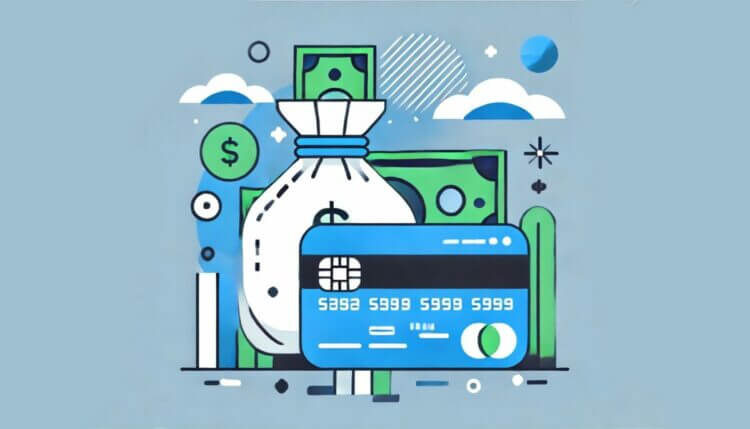What Is an Outstanding Balance? Differences and Significance
An outstanding balance on your credit card can significantly impact your financial health. Whether you’re managing personal expenses or business transactions, understanding your outstanding balance and how it affects your financial standing is crucial. An outstanding balance refers to the amount you owe on your credit card that has not yet been paid off.
This guide will walk you through the importance of managing your outstanding balance, how it influences your credit score, and strategies for effective debt management. By the end, you’ll have a clearer understanding of how to navigate your financial responsibilities with confidence.
Nowadays, credit cards are the best way to pay for transaction costs. It is also a very convenient way of supporting your cash flow while you are at your job at the waiting stage of your income. However, they may have the potential to create acute financial distress for you if you skip or make late payments.
The amount one owes and does not yet pay, which also refers to as a current balance or balance outstanding, is the basic value shown on the credit card statement specifying the overall amount the cardholder has not paid yet.
Since making a payment is not compulsory as you use a credit card, the total will show what you must pay at the end of the term, which is usually monthly. Further reading will help you grasp the concept of an outstanding balance and how it reflects your credit.
Another requirement of looking after your financial situation is credit card payments. Regular use of credit cards would tell you your unpaid credit card balance, thus helping you keep track of the money you have borrowed from a credit card company.
Outstanding Balance: Meaning and Definition
The term outstanding balance, or simply the current balance, constitutes the amount of money not paid for the credit card account or loan. Any debt resulted from transactions like purchases, interest charges, cash advances, or balance transfers. An outstanding balance provides a current view of the credit card account, interpreted in its usual and strict meaning.
This means the presented figure is both up-to-date and correct, and it conveys what you have spent on your card as of now. Your outstanding balance is what you currently have on your card and can involve the following:
Purchases Cash advances Balance transfers Interest charges FeesEach time you shop with the bank, you have an outstanding balance, which helps you understand how much credit is available for your next purchase. Your credit score indicates the maximum amount a lender will allow you to borrow on a credit card or line of credit.
For example, you owe $2,000 to your credit card, but your credit limit is $4,500, and you have a pending transaction of $300 present in your account. Your remaining credit at this moment is $2,200 (4,500 – 2,000 – 300 = $2,200).
What Is an Outstanding Balance on a Credit Card?
If you intend to keep the credit card company happy, the best way to do that is to pay off the statement balance monthly. Besides, you don’t need to pay interest on your purchases. To avoid being charged interest on a positive credit card balance, it’s a good idea to clear your balance monthly. By doing so, you prevent any interest from accruing.
A positive balance always helps to be the better way of obtaining the advantage of a credit card, but there are times when you fail to handle situations in which you cannot pay the full balance. During this type of situation, pay the minimum amount that will enable you to maintain your credit score.
What Increases Your Total Loan Balance?
Your average rating depends on various indicators. The credit utilisation score is generally the major factor, which is 30% whole of the FICO Score. Credit utilisation refers to the amount of revolving credit used, often referred to as the total credit limit.
Dragging along with a certain huge credit card balance might, in fact, make your credit score plunge. Keeping an eye on the outstanding balance of your cards would keep you out of this problem.
Most loans, however, do have amortisation. This, therefore, means that if you regularly pay, the lending company will, at the end of the term, have fully paid the loan out. Negative amortisation is allowed, but it is used in very few cases as it is a very high-risk venture for both the lenders and the borrowers.
One place where negative amortisation is still dealt with is student loans. Because of this, a new income-based repayment plan was founded in 2023.
What Is a Statement Balance?
During each billing cycle, the credit issuer, at the time of billing, will report your credit usage to your credit card’s company credit bureau. However, it is generally the story that the credit card issuers report the balances on the statements. At the same time, some issuers send the current balance in lieu of this. By querying directly to the credit card issuer, you can easily find the balance which reports and when it’s on your report.
Balances affect your credit by influencing your credit utilisation ratio, impacting your ability to secure favourable terms on loans and new credit cards.
After your credit card issuer reports showing how much debt you owe them, the credit bureaus carry out the use of the debt-to-credit ratio: the proportion of your total available credit that you are using at any time.
One of the major factors in your credit score is the credit utilisation rate. Thus, it can negatively affect your approval chances for new credit cards. Consequently, your ability to apply for lower interest rates and larger credit limits. If you want a loan to buy a house or a car, then the bank or the financiers will analyse your credit score.
In simple terms, the lower the credit utilisation rate, the better, but for those who do not know what is a low credit utilisation rate exactly, the main parts in the FICO Score and Vantage Score scoring models, a current balance not exceeding 30% of your total credit limit will be a great differentiation.
What Is an Outstanding Current Balance?
Statement balance represents the purchases and payments on your card during a set period. In contrast, your current balance reflects all the charges and payment activity on your credit card account up to the date the statement is generated.
Your current balance does not remain fixed like your statement balance. Your current balance updates every time you use your credit card. It gives you a better representation of the total amount you owe on your credit card at any given time.
Statement Balance vs Current Balance
Your credit card outstanding balance represents the amount you must pay at the current moment. The statement balance is the amount due from the previous statement and is available for payment. This can be seen as either the monthly balance or the new balance.
In other words, the statement balance totals all transactions made during the most recent billing cycle, typically one month.
Subsequently, you will notice a difference in the two numbers, e.g. after you make a payment post the date of the monthly statement.
Why Are Your Statement Balance and Current Balance Different?
Your current balance updates continuously based on your account activity. It is showing purchases, payments, deposits, and accrued interest after your billing cycle closes. For instance, if your billing cycle runs from the 1st to the 28th and you spent $1,000, your statement balance on the 28th will be $1,000. If you make an additional $500 purchase on the 29th, your statement balance will remain $1,000. Still, your current balance will rise to $1,500 because the new transaction will be included after the billing cycle closes.
What If You Can’t Pay the Statement Balance?
If paying the statement or current balance in full is impossible, you can opt to make the minimum payment. This helps prevent late fees and protects your credit score. Keep in mind that paying only the minimum amount leaves more money accruing interest.
It’s preferable to pay the total statement balance whenever possible to reduce interest and pay off your debt sooner.
In conclusion, understanding your outstanding balance, statement balance, and current balance is essential for managing your credit effectively. Making timely monthly payments and maintaining low balances relative to your credit limits can positively impact your credit score and overall credit report. By staying informed and proactive, you can avoid unnecessary interest charges and maintain financial health.
The post What Is an Outstanding Balance? Differences and Significance appeared first on FinanceBrokerage.


